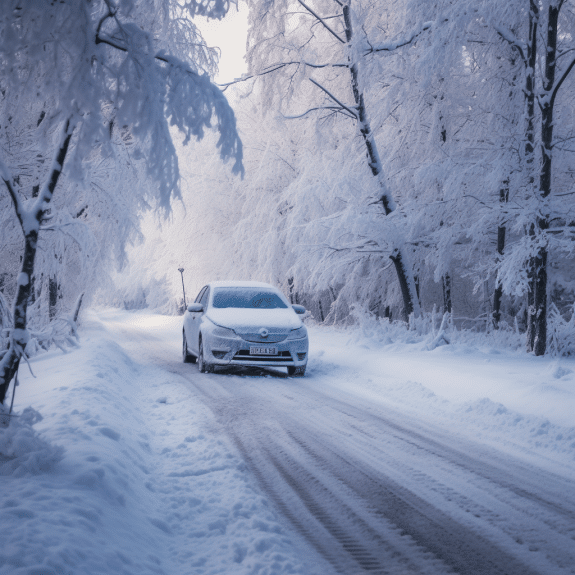
Mastering Cold Weather Car Starting Tips and Techniques
Cold Weather Car Starting Tips: Every person has their own story about the time they spent hours in the cold, waiting for their car to start. Car batteries can be affected by temperature in much the same way as any other battery.
An extremely cold temperature will make it much harder for the battery to jumpstart the car. This is because the extreme cold impacts the battery’s ability to produce enough power to turn the engine. Depending on how cold it is, you may be able to start your car in cold weather-In this case, -40 to -200 °Fahrenheit, provided the battery isn’t drained, and there are no frozen fuel lines.
Too Cold temperatures to Start a Car
What is a Too Cold Temperature ?
The exact temperature varies from car to car. A well-maintained engine may start for some cars in zero-degree weather, but other cars might fail to start once they reach freezing temperatures.
It is still possible to start a car at 32 degrees Fahrenheit despite the cold weather. Also, some cars can start well below zero temperatures, but many factors contribute to this.
Why your car won’t start in the morning on a cold day
Starting your car in cold weather can be hazardous and challenging, in addition to being a problem for your car. Here are a few reasons why cars sometimes have trouble starting when the temperature drops.
Cold batteries: Cold temperatures slow down the chemical reaction in car batteries, creating less current. The battery needs to be warm to work at its optimal state. The electrical system in your car will have a hard time getting the electricity it needs.
Thick oil in your tank: During cold weather, engine oil thickens and doesn’t flow as well. Due to this, the battery has to work harder to pump through the engine block. This can cause the engine not to start if the battery is already low.
Fuel lines with moisture: Fuel blockages can result when there is moisture in the fuel lines, which freezes and causes fuel to freeze, preventing the engine from starting. These situations are common when dealing with thin, easily blocked fuel lines. Diesel drivers should be aware that the fuel ‘gels’ in cold weather, which means the engine will take longer to start.
Carburetor-equipped vintage cars
This applies only to older models of cars with carburetors. It does not apply to all motorists. Carburetors are particularly susceptible to cold temperatures because of the small size of their nozzles. The nozzle clogs easily and prevents moisture from evaporating, causing ice to form.
Tips for starting a car in cold weather
- Turn off everything
Electric accessories, such as headlights, heaters, and radios, use up battery power, so turning them off before starting the car will give the battery a greater chance of starting. You can kill the battery again if you switch the accessories back on immediately once your engine has started. It would help if you let it run for a few minutes before switching on these accessories.
- Dip Your Clutch
It might be a good idea to dip the clutch as you turn the ignition on. This allows the engine to start up even in a cold car because the battery doesn’t work as hard.
- Clean and tighten your battery leads
If you can see evidence of corrosion under your car’s hood, you will need to clean the cables. Even if your cables are corrosion-free, check how tight they are. Check to see if the cables are tight, and tighten any loose clamps before re-trying the ignition.
- Make sure your engine oil is full.
Your engine oil may thicken and become less lubricating during the colder months, resulting in less energy available for the battery to start the vehicle. Not only will filling up your oil improve your battery’s lifetime, but if your oil is too old, it will slow down your engine’s performance.
- Jumpstart
If none of the other options work, you may need a jumpstart. However, improperly connected cables can cause serious damage.
Both cars should be in neutral and their engines off when using the red jump cable. The red cable should be connected to the positive terminal of the battery in your car and the positive terminal of the other vehicle. Next, attach one end of the black cable to an unpainted metal surface and the other end to your negative terminal. After starting the other vehicle, let it run for a few minutes before starting yours. Once you’ve got your engine running, you’re ready to go!
The Key To Preventing Non-Starts
- Using the correct oil
You may need to use different engine oil in cold weather. Read your owner’s manual first to find out which oil you should use. If you’re not using the right one, replace it.
- Maintain a full petrol tank
An engine that is low on oil has to work harder to start. When you start a cold car in the morning, it will consume an average of 40% more fuel. Fill up your oil if you notice that it is getting low. By doing this consistently, you will keep plenty of oil on hand for those chilly mornings.
- Get a new battery
Winter strains your car battery more than any other time of year. So if you have noticed a drop in power lately, you should consider replacing it. It is not the cheapest option, especially when your current battery has some life left, but it will ensure that you will not wake up to a car that won’t start in the morning due to cold.
- Keeping the water out
Dry gas additives help remove water from gasoline so that your fuel lines won’t freeze up. They also help prevent the formation of gasoline-oil emulsions that can clog fuel filters.
- Heat it up
It can mean the difference between getting to work on time or having to call the tow truck if you live in a particularly cold area. Investing in a battery heater or block heater can allow you to keep your engine warm overnight.
Battery, fuel, and starter motor systems are susceptible to damage from cold, wet weather, as are alternators, oil, and carburetors where applicable. You can prevent your vehicle from not starting after being left out in the cold by following these tips for starting and preventing non-starts.
